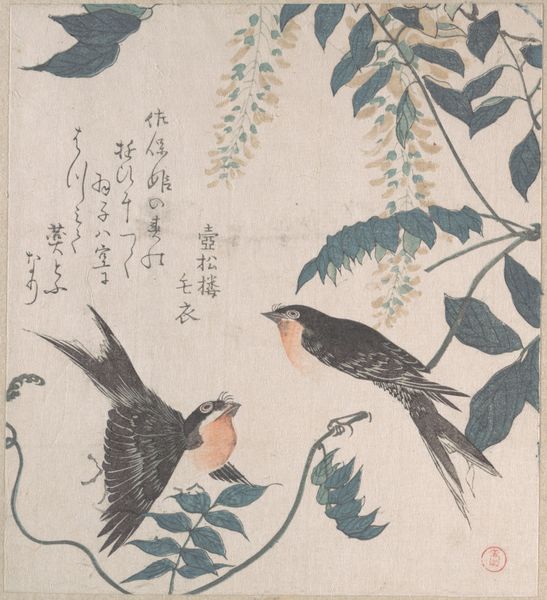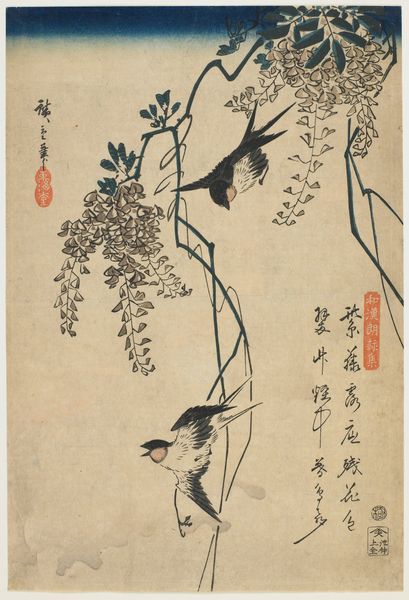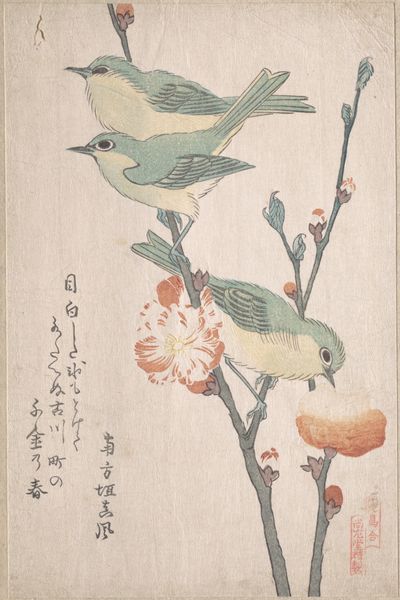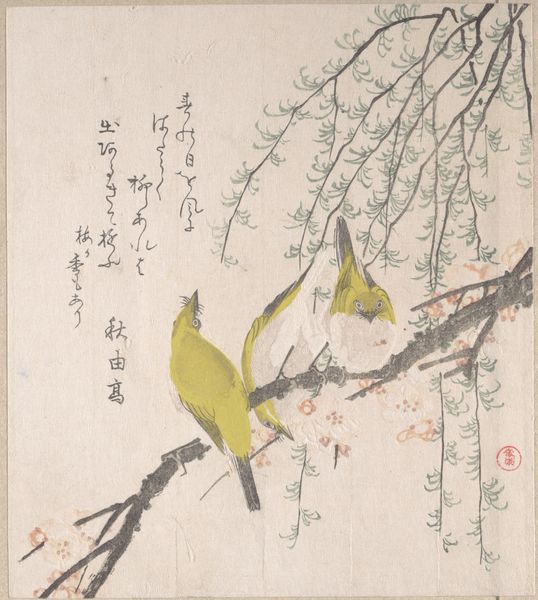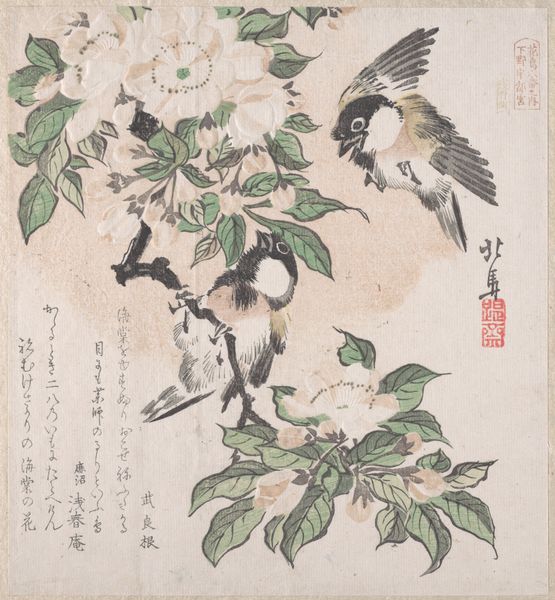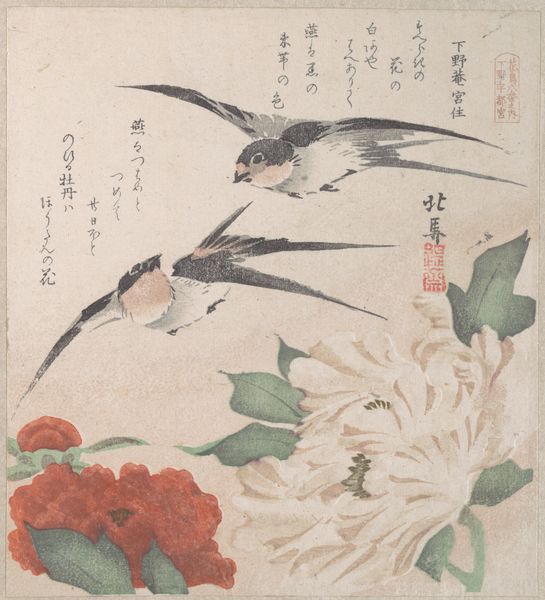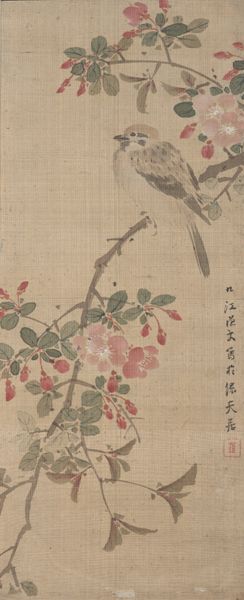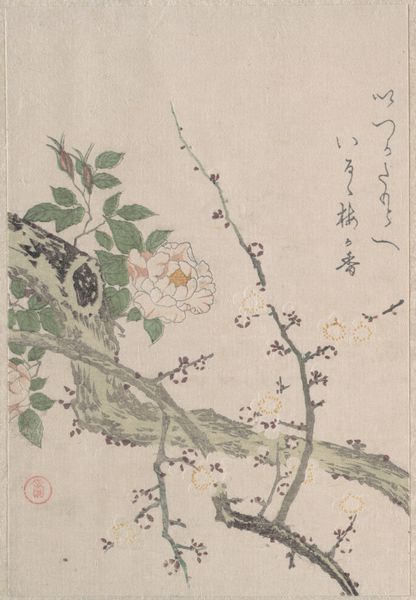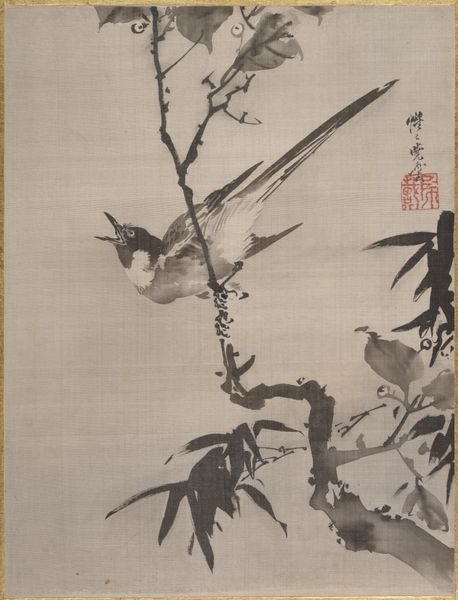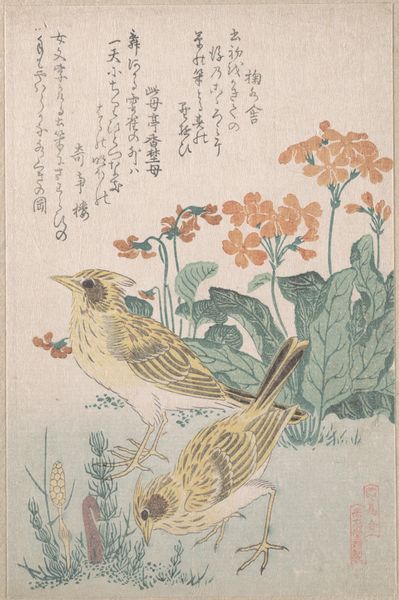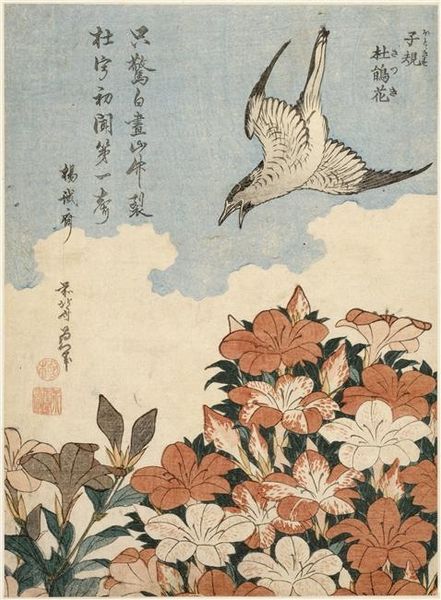
print, woodblock-print
# print
#
asian-art
#
landscape
#
ukiyo-e
#
figuration
#
woodblock-print
Dimensions: 8 1/8 x 7 3/8 in. (20.6 x 18.7 cm)
Copyright: Public Domain
Curator: Looking at Kubo Shunman's "Bullfinches and Cherry Blossoms" from the 19th century, my immediate reaction is serenity. There’s such stillness captured in the image, a moment of quiet observation. Editor: And that serenity comes from a very particular production process, doesn't it? This Ukiyo-e woodblock print relies on an incredibly collaborative process—the artist's design is painstakingly carved by woodblock cutters and then printed by hand. It speaks to a specific network of skilled laborers within a particular economic system. Curator: Absolutely. And it's intriguing how the softness of the blossoms contrasts with the defined lines of the bullfinches. They seem to be the focus. The placement on a limb highlights that point. What do you see there? Editor: I’m drawn to how Shunman is positioning this scene. Think about the Edo period’s rigid social structure, where artistic expression was often intertwined with cultural commentary. The pairing of these delicate blossoms and these, frankly, rather stout bullfinches, reads to me like a commentary on fleeting beauty versus perhaps something more grounded. The inclusion of the poetry strengthens the idea. Curator: Yes! The inclusion of calligraphy certainly elevates the composition beyond just a mere rendering of nature. The relationship of script and the pictorial here transforms the piece. But is that beauty attainable if the product of artwork involves social inequalities and labor conditions we take for granted. Editor: And let’s not forget the symbolism of cherry blossoms themselves. They represent the ephemeral nature of life, but that meaning is created because of production practices—the cultivation of certain woods, access to pigment, dissemination. Whose life are we really reflecting? That tension, for me, makes this piece more complex. It brings together a commercial process alongside social context. It makes me ponder ideas around social class at this time. Curator: So, the choice of materials—the paper, the ink—becomes as significant as the imagery? Editor: Precisely. The act of creating these prints reflects economic exchange, artistic skill, and labor—all combining into something we recognize and engage with as beautiful art. The making allows the artist to reflect upon what those blossoms and the existence of the finches represent in human terms. Curator: So, considering its place within the Metropolitan Museum's collection, it’s not merely an artifact of aesthetic beauty. It's a document of a specific cultural moment—both materially and thematically? Editor: I think so. Viewing it through a lens that acknowledges those various systems at play provides a much fuller appreciation. These prints served purposes—adorning homes, commemorating events—and those purposes reflect desires and aspirations of various social levels.
Comments
No comments
Be the first to comment and join the conversation on the ultimate creative platform.
